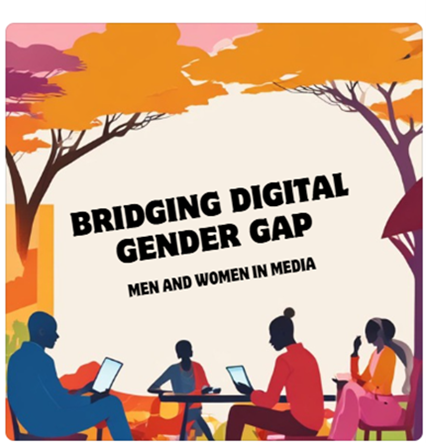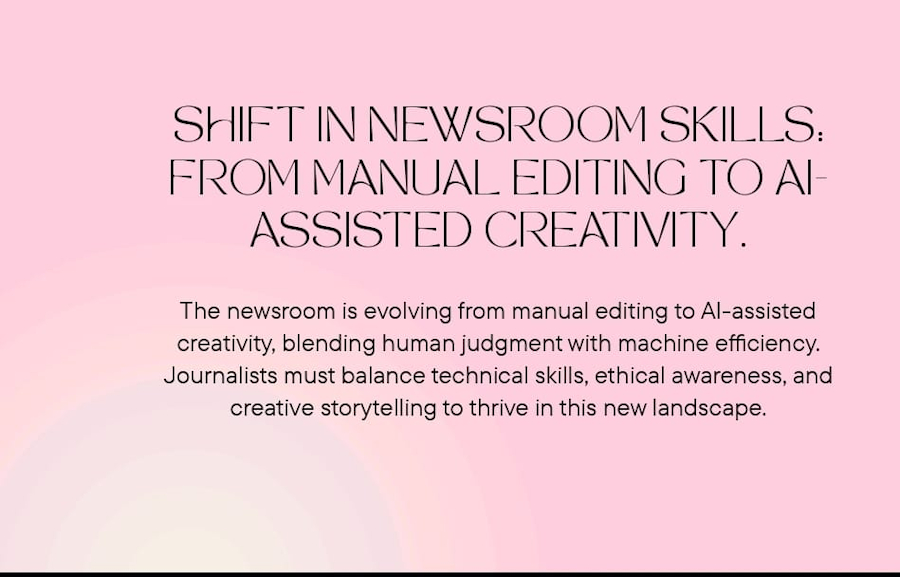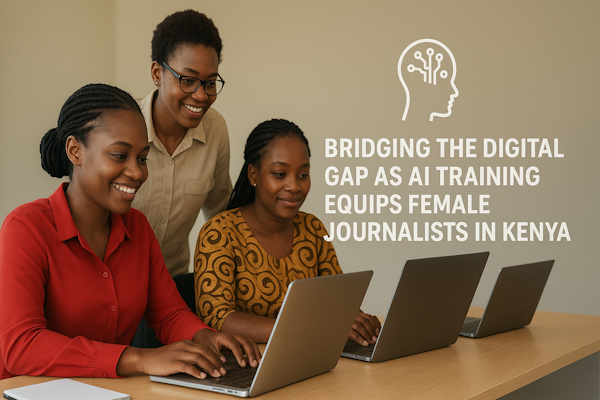By Everlyne Wanja Muriithi
A Closer Look at Men’s and Women’s Representation in Digital Platforms

In recent years, Kenya’s media landscape has undergone a seismic shift towards digital platforms, fundamentally altering how news and information are created, shared, and consumed. This transformation has created opportunities for both male and female journalists, yet a persistent gender gap remains in terms of representation and placement. A closer examination of the current state of digital media reveals striking disparities, shaping not only who tells the stories but also whose voices are amplified.
Gender Representation in Digital News Platforms
The digital revolution was expected to level the playing field, but research suggests otherwise. A 2023 study by the Aga Khan University Graduate School of Media and Communications found that women are still significantly underrepresented in key news segments. In fact, 23% of the sampled days had no coverage of women in Kenyan newspapers at all. This lack of visibility extends to digital platforms, where male perspectives dominate, particularly in politically and economically driven stories.

Digital media is meant to be more inclusive, yet the absence of gender-balanced reporting suggests that traditional biases have merely been transferred online. Male journalists continue to hold prominent roles in shaping narratives, while women are often sidelined or confined to specific beats like human-interest stories, health, and lifestyle features.
Audience Engagement: A Gendered Perspective
Another key aspect of this disparity is audience engagement. According to the 2023/2024 State of the Media Report by the Media Council of Kenya, newspaper readership is significantly higher among men (33%) than women (18%). While these numbers pertain to print media, they reflect a broader trend that extends to digital consumption patterns. With digital news platforms predominantly catering to male audiences, the cycle of exclusion continues, and content is produced with a male-dominated audience in mind, reinforcing the gender gap in both consumption and representation.
Social media and alternative digital platforms could serve as spaces for women journalists to assert their presence, but challenges persist. Algorithms tend to favour virality over diversity, meaning that stories told by women, especially those on gender-sensitive issues, may not gain as much traction as male-driven narratives.
Challenges Facing Female Journalists in the Digital Realm
Several factors contribute to the underrepresentation of women in digital media, including:
Cultural Barriers: Deep-seated societal norms often discourage women from pursuing leadership roles in journalism, leading to fewer women in decision-making positions.
Limited Access to Training: Many female journalists lack specialized training in digital storytelling, multimedia production, and data-driven journalism, which are increasingly essential in the digital space.
Online Harassment: Female journalists are disproportionately targeted by cyberbullying and online harassment, making digital platforms a hostile environment for their professional growth. Fewer Career Advancement Opportunities: Gender biases within media organizations mean that men are more likely to be promoted to leadership roles in digital media, further limiting women’s influence in shaping digital content.
Towards a More Inclusive Digital Media Landscape
To bridge this gap, stakeholders in the media industry must take deliberate steps to foster gender inclusivity in digital journalism. Here’s how we can move forward:
Capacity Building: Investing in digital literacy and specialized training programs for female journalists will empower them to thrive in digital spaces. Initiatives that provide mentorship, scholarships, and networking opportunities can also help level the playing field.
Policy Advocacy: Media organizations must develop and enforce policies that promote gender equity in content creation, editorial leadership, and digital storytelling. Gender-sensitive policies should address online harassment, ensuring that female journalists feel safe and supported.
Encouraging Diverse Content: Newsrooms and content creators should actively prioritize diverse storytelling that amplifies women’s voices in political, economic, and technology-driven discussions rather than relegating them to softer beats.
Audience Awareness & Support: Readers and viewers have a role to play in demanding diverse and inclusive content. By actively engaging with and supporting women-led media initiatives, audiences can influence editorial decisions and content direction.
Final Thoughts: Representation Matters
The digital space holds immense potential for inclusive storytelling, but without deliberate efforts to address gender disparities, women will continue to be marginalized in mainstream media. Bridging this digital gender gap is not just about fairness. It’s about ensuring a more diverse, balanced, and representative media landscape that benefits everyone. The future of digital media in Kenya must be one where men and women have equal opportunities to shape narratives, tell stories, and influence public discourse. It’s time to turn advocacy into action.




